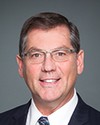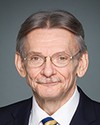Yes, we will certainly do that.
Evidence of meeting #18 for Public Accounts in the 42nd Parliament, 1st session. (The original version is on Parliament’s site, as are the minutes.) The winning word was training.
A video is available from Parliament.
Evidence of meeting #18 for Public Accounts in the 42nd Parliament, 1st session. (The original version is on Parliament’s site, as are the minutes.) The winning word was training.
A video is available from Parliament.
Conservative

The Chair Conservative Kevin Sorenson
Thank you, Mr. Lefebvre.
We'll now move to Mr. Poilievre, for seven minutes.
Conservative

Pierre Poilievre Conservative Carleton, ON
In his opening remarks, the Auditor General said, “The Canadian Army needs the army reserve in order to carry out assigned missions. The army reserve provides almost half of the Canadian Army's 40,000 soldiers. On major international missions, the Canadian Army expects army reserve units to provide up to 20% of the deployed soldiers.” In paragraph 5 he said, “12 of the 123 army reserve units were smaller than half of their ideal size. Although the Canadian Army provided funding for 21,000 army reserve soldiers, only about 14,000 were active and trained.”
Given that we are 7,000 reservists below the funded amount, would Canadian army reservists be able to constitute 20% of the number of deployed soldiers in the event of a major international mission?
LGen Marquis Hainse
Mr. Chair, thank you for the question.
The answer is yes. Why do I say that? It's because we have done it in the past. What we need to realize is that the army reserve units are not deploying necessarily as a unit. They are deployed as a subunit or a sub-subunit, which means it's a smaller group.
In most cases when they deploy for international operations, the way we have done it in the past is by regrouping reservists from many units with their regular forces counterparts, up to 20% of the strength of the particular organization being deployed, and they have undergone very robust training to meet all of the requirements needed for the mission. That's the PAT that we have been using in many years past and will continue to use in the future.
Conservative

Pierre Poilievre Conservative Carleton, ON
If we're able to achieve the 20% number of reservists for major international missions with only 14,000 active and trained, why is it that 21,000 army reserve soldiers is considered to be the goal of DND and the Canadian Army?
LGen Marquis Hainse
Mr. Chair, 21,000 is based on the number of units we currently have, and the number of units we currently have is based on historical data, legacy data. Those units happen to be where they are, not based on our history. We feel that there are a lot of positive sides to having those units, even if some of the units are not totally filled.
We added up the number of persons we have in all of the units and made an average of the personnel showing up in the historical data and came up with 21,000. If you were to add the complements of the numbers, that is, of units that were filled totally, you would come up with the number 29,000, but this is not what we're funded for, and it is not what the reality has been in the last decade or so. The figure of 21,000, then, is based on historical data.
Conservative

Pierre Poilievre Conservative Carleton, ON
The army provided sufficient funds to recruit 21,000 reservists. There are actually 14,000 now, which means a difference of 7,000. Where did the money allocated to the training of the 7,000 other reservists go?
LGen Marquis Hainse
Mr. Chair, the latest data that we have is 18,000. Out of those 18,550, there are about 1,200 who are not ready, so they're not showing up, and about 4,000 are still training. They are doing their basic training, so they still need to be funded. The number of 13,000—actually it's more than that—it is 13,000 plus another 4,000 who are being trained.
The money that does not exactly cover all the people who are training is put back into operations and maintenance, not only toward the reserve but toward the operation of the army. Except for this particular fiscal year that we have just been through, all of the money that was committed to the reserve went back to the reserve, and why is that? It is due to the refinement of our funding model that we have been working on over the last year and a half.
Conservative

Pierre Poilievre Conservative Carleton, ON
Forgive me, but I'm having trouble understanding the mathematical calculation that explains the difference between 14,000 and 21,000. I know you have just explained it, but I would appreciate hearing the explanation again.
LGen Marquis Hainse
Let me do this again.
So ,18,850, that's what we have now, around that number. Out of that number—
Conservative

Pierre Poilievre Conservative Carleton, ON
I don't mean to interrupt, but could you just please explain the difference between the 14,000 that the Auditor General stated and the 18,000 that you're referring to now?
LGen Marquis Hainse
I'm getting there.
That 14,000 is the number of people who are ready to be deployed, employed on operation, but you need to add the 4,000 to that who are being employed. They are being trained right now. They're not being deployed, but they need to do basic training. That doesn't bring you necessarily to that—
LGen Marquis Hainse
You still have 1,200 personnel that have not shown up for training over the last 30 to 180 days. They are the ones that have not been paid. They have not received any money. The extra money has been reinvested in operations and maintenance.
Conservative

The Chair Conservative Kevin Sorenson
Thank you very much. We'll come back to more questions in that area.
We'll go back to Mr. Christopherson, for seven minutes.
NDP

David Christopherson NDP Hamilton Centre, ON
Again, thank you, Chair.
Thank you, Mr. Ferguson, and our guests. We appreciate your being here.
For the wise deputies and other entity leaders, I hope they were paying attention when we said that we're picking up on the issue that the Auditor General had raised early in this Parliament, and that is the issue of data and the fact there's still not the priority that there should be on the quality of data, the timeliness of data, and the analysis of it.
We're spending an enormous amount of money in government very effectively putting together the processes for collecting this information. In the real world we're not doing much with it, certainly not as well as we can, and it would seem that this report is no different.
I looked at the Auditor General's opening remarks, “It is critical that National Defence has information on whether soldiers are qualified for deployment.” There are a number of aspects of this we're examining today. He went on to say, “However, the system that records this information indicated that a high percentage of army reserve soldiers did not hold the required qualifications.” Well, that's disappointing, and we can talk about why this is and what you're going to do about it, but to me, the key thing is the next sentence which says, “National Defence told us that the information from this system could not be relied upon.” Again, if we're going to use these analyses as assumptions and then move on those assumptions, but the analysis is inadequate, basically we're building a house of cards that's going to fall.
I ask the Auditor General to jump in if I'm getting this wrong in some way.
The Auditor General said on page 9 of his report:
It is critical that the Canadian Army know whether its soldiers are prepared to deploy for domestic and international missions. However, we found that the information system used by the Canadian Army to verify the status of individual soldiers showed that soldiers had low levels of current qualifications.
That's in the main report. He's emphasizing his remarks today because the answer that he got from you folks was, “Oh well, don't worry about that information, it's not accurate.”
Talk to me about that, please.
LGen Marquis Hainse
Mr. Chair, I can start and maybe General Joyce would like to add some comments.
First of all, you are right to point this out. There are two aspects to your question. There's the data and there's actually the requirement to train reservists. I'll deal with the requirement.
First of all, I provide clear guidance, generic guidance to all of the units as to what is expected in terms of the training level of the reservists, and what is expected has been clearly enunciated. They have to go up to a certain level, from level 2 to level 3. We focus on basic foundation training up to level 3, and I have to entrust the commanders at all levels to provide this.
Having said this, it is absolutely true, and we totally agree with the report and we totally agree with your comments, that once the training is done, capturing the data that they have been trained has not been done properly. It has been very asymmetric due to various reasons, due to lack of some personnel in some units to record this, due to computers or various applications that we are using. We are addressing this right now with the new system, Guardian. I would invite General Joyce to talk about that system.
NDP
MGen Derek Joyce
Okay, fair enough.
It's a very valid question. The current system is cumbersome and it really is not sufficient to our needs, as the Auditor General pointed out, and we certainly agree with that. We need a modern HR tool and, as I mentioned earlier, that is being shepherded by the military personnel management transformation HR software, the Guardian project. Over the next six years we're going to see four different releases that will incrementally improve our ability to pull in and report on regular data.
NDP

David Christopherson NDP Hamilton Centre, ON
Six years? Does that mean you're gathering new information, or is that six years with the data that you should have been gathering properly all along?
MGen Derek Joyce
It's digitizing our ability to pull in readiness information for all the members.
NDP

David Christopherson NDP Hamilton Centre, ON
How has this been viewed in the past? When this wasn't done and someone responsible was looking at it, and these things weren't filled out, what was the attitude: not important, don't worry about? Is that how we got here?